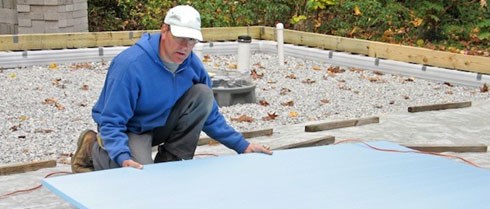TORONTO, Feb. 26, 2015 (GLOBE NEWSWIRE) -- According to some opinion surveys, many Canadians harbour the misconception that plastics are an unwise use of energy since most are made from raw materials derived from fossil fuels. Surely if plastics are made from fossil fuels, they must be a net drain on our nation's energy resources, right?
Could the reality be different? What if plastic products actually save more energy than is used to make them? Let's take a look at the use of plastics in building materials to illustrate how plastics, even those sourced from fossil fuels, can actually conserve our country's energy.
Now that it's winter, many of us are experiencing spiking energy bills as we try to keep warm. Most of the money we spend on home heating (or cooling in the summer) pays for energy that is derived from fossil fuels: Fossil fuels – oil and natural gas – are used for approximately 80 percent of energy demand. And we use a lot of that energy in our homes and buildings.
Unfortunately, much of this energy is wasted, due to many causes: inefficient heating/cooling systems, outdated building practices, construction based on older building codes, wasteful personal habits – and (the big one) – low-tech insulation. Wasted energy hurts our environment, hurts our wallets … and hurts our country.
Governments are debating legislation that would boost energy efficiency in our homes and buildings, which are great places to look for significant energy and cost savings through more energy efficient building materials. In fact, boosting energy efficiency is one of the cheapest and quickest ways for our country and households to save energy and money.
What's this have to do with plastics? While it may sound like a contradiction to some, improving energy efficiency in buildings hinges on increased use of materials derived predominately from fossil fuels: plastics. That's because using a little bit of energy (inherent in plastics) can save a whole lot of energy over the lives of our homes and buildings.
Studies that look at the entire life cycle of various building products demonstrate that plastic building and construction materials save lots of energy. The energy saved by using plastic building and construction materials compared to alternative materials is trillions of BTU of energy a year.
The most obvious example of an energy saving plastic building product is, of course, insulation. Most of us are familiar with the concept of "R value" – roughly speaking, how efficient a material is at "insulating" or (more specifically) the measure of resistance to heat flow of a given thickness of insulation. All kinds of plastic foam insulation have excellent R-values. In addition, a whole host of other plastic building products – such as house wraps, foam sealants, caulks, coatings, and so on – work together with plastic foam insulation to improve its ability to keep heat where it belongs.
And these products do their job well – foam insulation can make a home much more energy efficient. A Plastics Energy and Greenhouse Gas Savings Study1 found that the Canadian cost for energy is C$6.02 per million BTU. For the entire country, the annual energy cost savings is C$728 million each year or C$36 billion over 50 years if all houses were insulated with plastic foam insulation.
Of course, it takes raw materials and energy to make insulation and other building products. But … the small amount of energy inherent in plastics saves a huge amount of energy over time. Plastic insulation materials, for example, save as much as 40 BTUs of energy for every one BTU of energy consumed to make the material. House wraps save even more – 360 BTUs of energy for every one BTU used to make the material. That's huge.
So… building products made possible by plastics can conserve far more energy than is used to make them – actually conserving fossil fuels.
And the job isn't done. Companies up and down the supply chain are constantly seeking materials and products that achieve even greater energy efficiency, and many are pursuing and utilizing alternative energy resources.
Today's intelligent plastics are vital to the modern world. These materials enhance our lifestyles, our economy and the environment. For more information visit www.intelligentplastics.ca.
[1] Plastics Energy and Greenhouse Gas Savings Using Rigid Foam Sheathing Applied to Exterior Walls of Single Family Residential Housing in the U.S. and Canada – A Case Study. Franklin Associates, Prairie Village, KS, 2000.
A photo accompanying this release is available at:
http://www.globenewswire.com/newsroom/prs/?pkgid=31047
